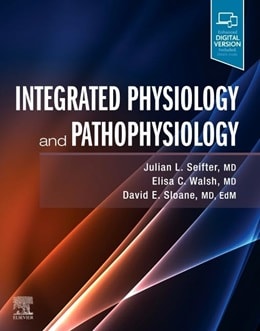Integrated Physiology and Pathophysiology Edited by physiology instructors who are also active clinicians, Integrated Physiology and Pathophysiology is a one-stop guide to key information you need for early clinical and medical training and practice. This unique, integrated textbook unites these two essential disciplines and focuses on the most relevant aspects for clinical application. A concise, review-like format, tables and diagrams, spaced repetition for effective learning, and self-assessment features help you gain and retain a firm understanding of basic physiology and pathophysiology. Integrated Physiology and Pathophysiology works equally well as a great starting point in your studies and as a review for boards.
- Shares the knowledge and expertise of an outstanding editorial team consisting of two practicing clinicians who also teach physiology and pathophysiology at Harvard Medical School, plus a top Harvard medical student.
- Provides an integrated approach to physiology and pathophysiology in a concise, bulleted format. Chapters are short and focus on clinically relevant, foundational concepts in clear, simple language.
- Employs focused repetition of key points, helping you quickly recall core concepts such as pressure-flow-resistance relationships, ion gradients and action potentials, and mass balance. You’ll revisit these concepts in a variety of meaningful clinical contexts in different chapters; this “spaced learning” method of reinforcement promotes deeper and more flexible understanding and application.
- Includes Fast Facts boxes that emphasize take-home messages or definitions.
- Contains Integration boxes that link physiology and pathophysiology to pharmacology, genetics, and other related sciences.
- Presents clinical cases and with signs and symptoms, history, and laboratory data that bring pathophysiology to life.
- Features end-of-chapter board-type questions, complete with clear explanations of the answers, to help prepare you for standardized exams.
Review
Take an efficient, integrated approach to two essential disciplines
